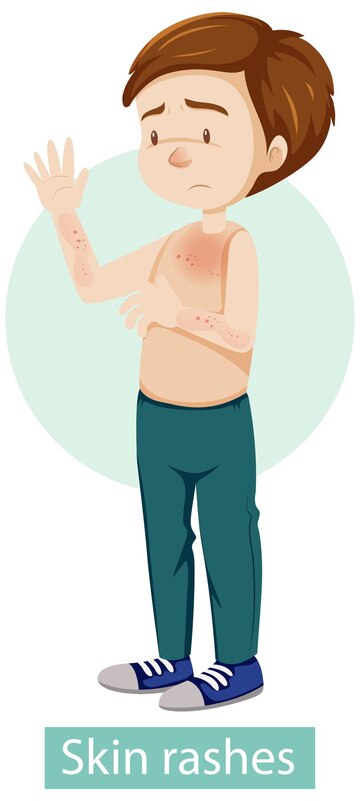
Understanding the Difference Between Seborrheic Contact Dermatitis and Other Forms of Dermatitis
Dermatitis is a fancy word for skin inflammation, and there are different types, each with its own causes and symptoms. One common type is seborrheic contact dermatitis. Let’s explore how it differs from other forms of dermatitis.
Seborrheic Contact Dermatitis
Seborrheic contact dermatitis is a skin condition that happens when your skin gets irritated by something it touches, like certain chemicals or metals. It’s a mix of two types of skin problems: seborrheic dermatitis, which causes redness and flaking on oily areas like your scalp, and contact dermatitis, which happens when your skin touches something it doesn’t like.
Other Forms of Dermatitis
There are several other types of dermatitis, each with its own triggers and symptoms:
- Atopic Dermatitis (Eczema): This type of dermatitis often runs in families and can cause itchy, red, and inflamed skin. It’s common in people with allergies or asthma.
- Allergic Contact Dermatitis: This happens when your skin touches something you’re allergic to, like certain plants, metals, or chemicals. It can cause redness, itching, and sometimes blistering.
- Irritant Contact Dermatitis: Unlike allergic contact dermatitis, this type happens when your skin gets irritated by something it touches, even if you’re not allergic to it. Common triggers include harsh soaps, detergents, or cleaning products.
How to Tell the Difference
So, how do you know if you have seborrheic contact dermatitis or another type of dermatitis? Well, it often comes down to the triggers and where the rash appears:
- Seborrheic contact dermatitis is usually triggered by specific irritants or allergens and tends to affect areas where the skin is oily, like the scalp, face, and chest.
- Other forms of dermatitis may be triggered by allergens or irritants as well, but they can affect different areas of the body and may be linked to other conditions like allergies or asthma.
Conclusion
While seborrheic contact dermatitis and other forms of dermatitis share some similarities, they also have distinct differences in their triggers and symptoms. If you’re unsure what type of dermatitis you have or how to manage it, it’s always best to consult with a dermatologist who can provide personalized advice and treatment options.
To seek medical advice, always consult a Doctor. Here are our recommended EXPERTS. Click here
To read more on SKIN. Click Here


